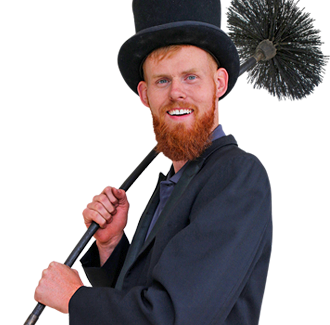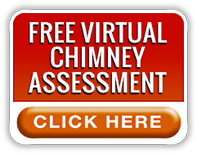Signs that Your Chimney Needs Sweeping
 Do you have a wood-burning fireplace or stove? If so, you have one of the most attractive and popular home features—but you are probably well aware. The ambiance of a crackling fire inside when ice is forming on the trees outside is a special pleasure that nothing else can quite duplicate. It’s important to maintain awareness, however, that a dirty chimney can affect the operation of the fireplace and the safety of using it. Chimney cleaning is needed periodically to remove dangerous creosote buildup, a flammable tar-like substance responsible for many chimney fires. The following is information about creosote plus advice for recognizing when it’s time for a chimney cleaning.
Do you have a wood-burning fireplace or stove? If so, you have one of the most attractive and popular home features—but you are probably well aware. The ambiance of a crackling fire inside when ice is forming on the trees outside is a special pleasure that nothing else can quite duplicate. It’s important to maintain awareness, however, that a dirty chimney can affect the operation of the fireplace and the safety of using it. Chimney cleaning is needed periodically to remove dangerous creosote buildup, a flammable tar-like substance responsible for many chimney fires. The following is information about creosote plus advice for recognizing when it’s time for a chimney cleaning.
The problem of creosote
Every time you light a wood fire in your fireplace, some creosote ends up being deposited inside your chimney flue. Creosote is highly flammable, and it’s a potential hazard because it increases the chances of a dangerous, possibly deadly chimney fire. When you clean your chimney, the purpose is to remove creosote, which has three different forms.
1. The use of a chimney sweep’s professional chimney cleaning brush can only effectively remove one form of creosote. In this form, it is flaky soot and fairly easy to remove.
2. Another type of creosote looks like black, shiny, hard flakes, and it contains hardened tar that isn’t so easily removed. A special tool called a rotary loop can knock out this type of creosote.
3. The most dangerous form of creosote is the third form, which looks like tar poured down a chimney liner. It is glazed creosote that hardens with layer after layer, until removed. The serious danger of this type of creosote is that if it ignites from hot embers, it can burn persistently. The intensely hot temperatures of a chimney fire can damage the flue and reach combustible parts of the home, resulting in a hazardous home fire. Removing this type of creosote is extremely difficult. A relatively effective method is to use a rotary head with chains. However, there are times when a chimney liner replacement is needed because the creosote can’t be sufficiently removed.
How to tell if it’s time to clean your chimney
The following circumstances provide you with hints or definite proof that your chimney needs to be cleaned:
· If it’s difficult to light a fire or if the fire burns slowly and doesn’t burn as brightly as you want it to, it could be because creosote has caused an obstruction in the flue. Combustion gases need to be able to easily exit the chimney, and thick layers of creosote can interfere with that important function.
· If your fireplace has become smoky, blowing combustion gases into your home, it could be because your chimney is dirty and can’t operate properly.
· When your fireplace is not in use, if you smell bad odors coming from your chimney, it probably means a good cleaning is needed, to remove excess creosote.
· When at least 1/8” of creosote has built up on the wall of your chimney flue, it’s time to have your chimney cleaned. You may not be able to determine this on your own. When you get your annual chimney inspection, which all fireplace owners are strongly advised to do, your chimney professional will let you know how much creosote buildup there is in the flue.
Reap the benefits of a clean chimney
When your chimney is cleaned as needed and kept well-maintained, it operates better and keeps your home and family safer. Contact us at Hudson Valley Chimney for chimney cleaning, annual chimney inspections, chimney repair, and all of your chimney-related needs. We’ve provided reliable services since 1976, and all of our sweeps are trained professionals.








